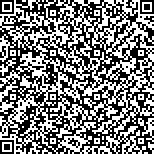| 引用本文: | 陈正新,王保军,黄海燕,董贺平,李绍全,尹延鸿,李春.胶州湾底质痕量元素污染研究.海洋与湖沼,2006,37(3):280-288. |
| |
|
| |
|
|
|
|
| 摘要: |
| 为了查清胶州湾表层沉积物的痕量污染元素对环境的影响,于2002—2004年对胶州湾全区进行了详细的污染调查,并对所获取的312个表层沉积物样品中的痕量元素按海洋沉积物质量标准进行了评价研究,其中铜有33个站位超第一类标准,有2个站位超第二类标准,1个站位超第三类标准。铜在研究区是最严重的污染元素,其污染面广,程度深。铬的污染面仅次于铜,有29个站位的样点超标。汞有22个站位超标,其中有5个站位超第二类标准,1个站位超第三类标准,虽然它的污染面较铜和铬小,但污染程度较严重。锌有7个站位超标,其中1个站位超第二类标准。镉的污染程度较低,只有3个站位超标。铅的沉积环境较好,只有2个站位的含量值超第一类标准。研究区污染最轻的痕量元素是砷。结果表明,这些痕量元素主要为工业和生活污水经排污沟和排污河而进入胶州湾。按其污染范围大小排序是铜>铬>汞>锌>镉>铅>砷;按其污染程度排序是汞>铜>铬>锌>镉>铅。 |
| 关键词: 胶州湾 痕量元素 沉积物质量标准 环境评价 |
| DOI: |
| 分类号: |
| 基金项目:国家自然科学基金项目,40272078号;中国地质调查局项目,[2003]20-02号和20-04号 |
附件 |
|
| TRACE ELEMENTS POLLUTION IN SEDIMENT OF THE JIAOZHOU BAY |
|
CHEN Zheng-Xin, WANG Bao-Jun, HUANG Hai-Yan, DONG He-Ping, LI Shao-Quan, YIN Yan-Hong, LI Chun
|
|
Qingdao Institute of Marine Geology, Qingdao, 266071
|
| Abstract: |
| An environmental survey on trace elements pollution in the Jiaozhou Bay was conducted during Year 2002–2004 in order to assess the metal pollution in the bay. The influence of the trace elements in the entire bay was evaluated according to concerning environmental codes. A total of 312 sediment samples were collected from the surface sediment. Results showed that in the bay, the copper content was beyond the national benchmark of the first-class sediment in 33 stations, of the second-class sediment in 2 stations, and of the third-class sediment in 1 station, showing quite serious pollution both in area and in concentration. Chromium came as the second serious polluter that was beyond the benchmark in 29 stations. Furthermore, samples from 22 stations were unqualified in mercury content. Although Hg pollution was smaller in area than those of copper and chromium, the pollution is the most harmful to human and the environment. In content of zinc, it failed to qualify in 7 stations, and cadmium pollution was relatively light with only 3 stations unqualified. Similar situation was found in lead, 2 stations, and in arsenic whose content was quite small.
In general, the area of large trace elements content mostly distributed in the east of the bay and some elements in the mouth of sewage drain, such as cadmium, chromium and copper. Some elements deposited in the estuaries of the rivers such as arsenic, mercury and zinc. Certain data showed that the amount of industrial sewage flowing into the bay in the years 1995, 1996, 1997 was 10340.96×104t, 9837.00×104t and 9229.30×104t, while that of household ones were 4287.00×104t, 9696.00×104t, and 9737.00×104t, respectively. Therefore, river channels and wastes drains were major pathways for the polluters. The descending sequence of the pollution was Cu > Cr > Hg > Zn > Cd > Pb > As in area and Hg > Cu > Cr > Zn > Cd > Pb in content. In the eastern part of the bay, although a large amount of sew age flood into the sea water every year, the tidal current played an effective role in water circulation and keeping sedimentary and water environment in a good condition. Moreover, three major underwater channels, Cangkou, Zhongyang and Xice, blocked the diffusion of pollution from the eastern part of the bay to the western part, playing an important part in keeping environments clean in the Jiaozhou Bay. |
| Key words: The Jiaozhou Bay, Trace elements, Sediments quality standards, Environment assessment |
|
|
|
|
|
